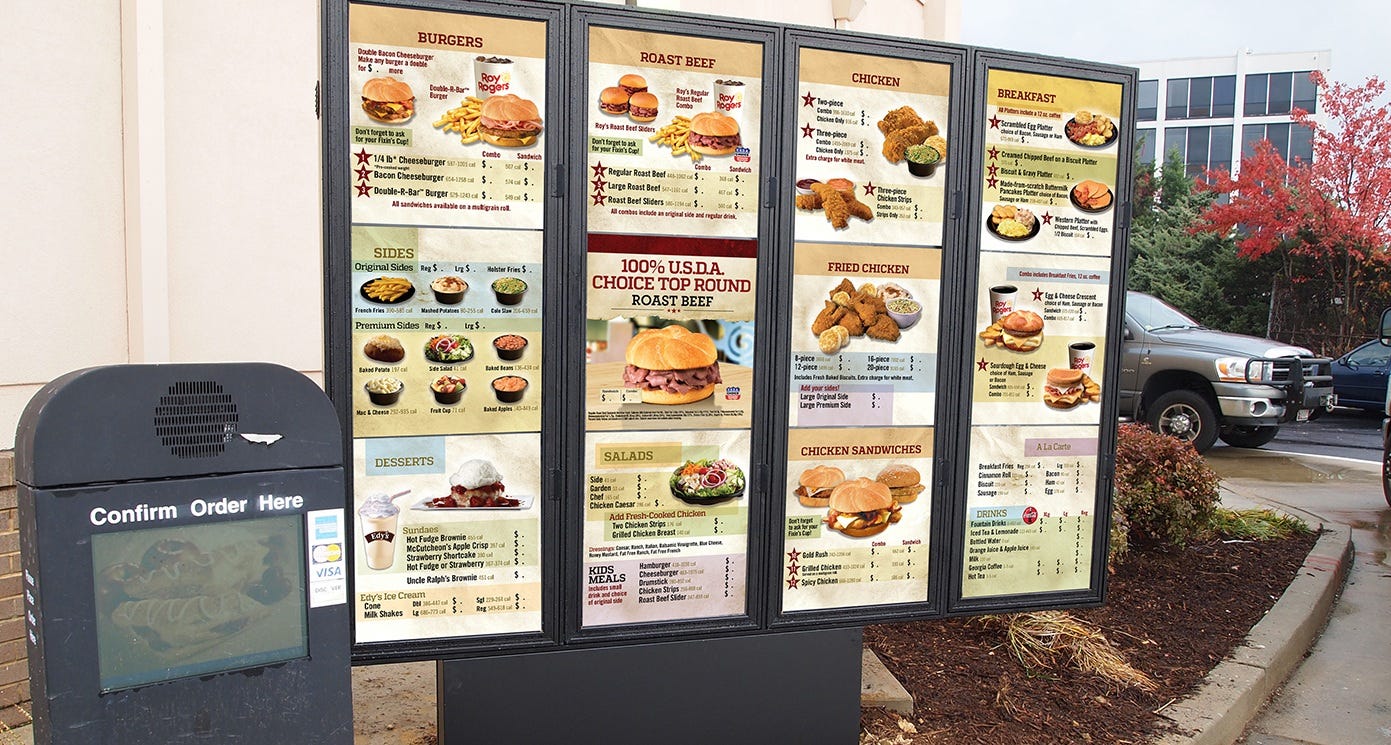Technological intervention is slowly turning out to be a must in the progressing food service business world for the betterment of customer experience and efficient way of operation. Digital menu boards are a leading innovation in the pool of many technological advancements. It is dynamic in showing menus, promotions, and other content that changes the experience that the customer has. However, the bottom-line question for business owners and operators remains: What is the return on investment for digital menu boards? This article looks at factors affecting ROI of digital menu boards, discussing some insights into the financial and operational impact they have on food service businesses.
Understanding the Basics: What Are Digital Menu Boards?
Simply put, digital menu boards are electronic displays used in place of traditional printed menus. They are powered mostly by either LCD or LED screens. Such types of boards are normally connected to a central content management system so that real-time changes can be made to the items on the menu, their prices, and promotional information. QSRs, cafes, and other food service establishments like them for their flexibility, visual appeal, and ability to be interactive.
The Financial Aspects: Initial Costs vs. Long-Term Savings
As one contemplates the value of digital menu boards, the first consideration is the outlay required. These include the purchase of hardware, which consists of screens, mounts, and players; software, such as CMS licenses; and installation services. These will vary considerably depending on the scale of the operation and the complexity of the system. Typically, an individual digital menu board configuration will be in the region of $1,000 to $3,000 per screen.
But, as high as the cost involved may seem at the beginning, the long-term savings more than justify the initial expenses. The traditional paper menus have been continuously updated with new prices on a regular basis, especially in those businesses that experience seasonal changes or frequent price modifications. With each update, there are costs associated with design, printing, and sometimes reinstallation. In this way, updated costs add up over time. On the other hand, digital menu boards can be updated almost instantaneously, at a small cost, virtually eliminating the necessity of reprinting and reinstallation.
Revenue Generation: Enhancing Sales Through Dynamic Content
One of the key reasons for investing in digital menu boards is the ability to drive increased sales. Digital boards, compared to static printed menus, are more likely to provide customers with dynamic content, animations, videos, and rotating promotions that will capture their interest. Research has proven that properly designed digital boards can spur a lot of increase in sales, which sometimes lies between 3% to 5%.
This opportunity goes up to another level if the content can be changed and tailored in real time. For example, you might want to promote high-margin items during peak hours of business, or perhaps limited-time offerings that create a sense of urgency. Second, the visual nature of digital boards will enhance customers’ perception of the brand, which will not only draw them back for further purchases but also retain them.
Operational Efficiency: Streamlining Processes and Reducing Errors
This amounts to operational efficiency, though this view is often ignored while computing ROI. In noisy and crowded scenarios, where order processing is conducted at a fast pace, menu presentation needs to be crisp and correct. Digital menu boards reduce errors that frequently occur due to traditional and hazy menus.
In this way, it keeps everything updated and thereby provides accurate information for both customers and staff. Moreover, digital menus integrated with POS systems synchronize the data of menus over every platform, which speeds up business operations to a much greater extent. It ensures that any changes made to the menu are immediately reflected on the screens, saving loads of time and effort spent juggling the menu across multiple locations.
Customer Experience: The Power of Engagement and Personalization
Customer experience is a key differentiator in the success of any food service business. The facility for engagement and personalization is possible with digital menu boards. For example, nutritional information, allergen warnings, or meal suggestions can be displayed according to the time of day or weather conditions through these digital boards.
This raises customer satisfaction with that level of customization and also bonds the customer to the brand. Digital menu boards can also be used as a tool for entertainment in passing time, which makes the waiting time feel shorter, thereby increasing satisfaction levels. Whether it be promotional videos, social media feeds, or interactive elements, these boards are used to increase the fun and engaging dining experience.
Measuring ROI: Key Metrics to Consider
To successfully measure the ROI of digital menu boards, businesses need to consider a few key metrics. These include:
- Increase in sales: Measure the percentage by which an increase in sales can be attributed to the use of digital menu boards. For example, you could compare sales before and after installation of the boards for items being actively promoted.
- Savings: What are the savings on printing, re-installation, and design costs of traditional menus? Add these up over time, and they go a long way to building the ROI.
- Customer Feedback: Quantify customer feedback to measure satisfaction and perceived impact on their experience from digital menu boards.
- Operational Efficiency: Track the reduction in errors and time saved updating menus in multiple locations. This efficiency is translated into reduced costs and improved service quality.
- Brand Perception: Understand the improvements in brand perception through surveys or metrics of social media engagement. Positive impacts on perception will reflect in increased customer loyalty and repeated business.
Conclusion: The Long-Term Value of Digital Menu Boards
Investing in digital menu boards comes with a clear return on investment for food service businesses. This return is based on real gains in increased sales, operational efficiency, and an enriched customer experience. The cost looks relatively high at first sight; however, in future benefits, it heavily outweighs the initial expense. If content can be updated dynamically, it will drive promotions for high-margin items and help more effectively engage customers on digital menu boards in this marketplace. For businesses looking at leading from the front and staying a step ahead of the rest of the industry, digital menu boards are an investment not just in technology but in the future of customer engagement and operational excellence. Analyzing and optimizing the described key digital menu boards’ metrics will make sure that foodservice operators have a strong, sustainable ROI in their decision to roll out digital menu board systems.





